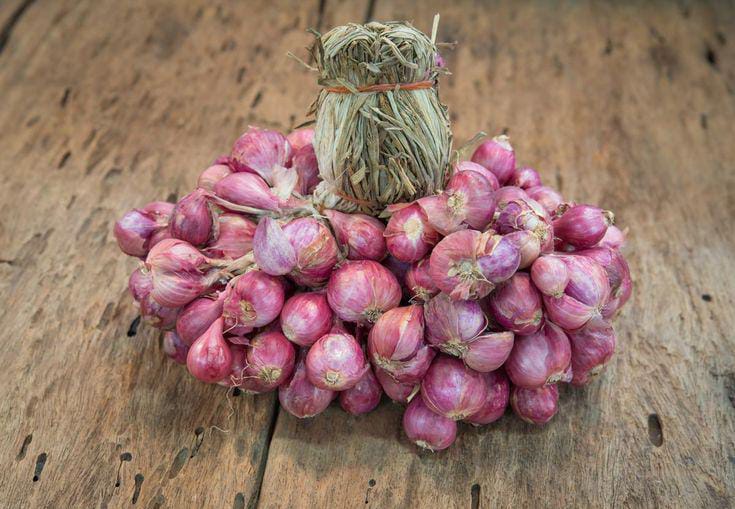
ഗ്രോ ബാഗിലും നമുക്ക് ചെറിയ ഉള്ളി വളർത്തിയെടുക്കാം Shallots Farming Tips
ഗ്രോ ബാഗിൽ നമുക്ക് ചെറിയ വളർത്തിയെടുക്കാൻ ഗ്രോ ബാഗ് നമുക്ക് ഫോട്ടോ നിറച്ചു കൊടുത്തതിനുശേഷം ചെറിയ ഉള്ളി അതിലേക്ക് വച്ച് കൊടുത്ത് നല്ലപോലെ വളർത്തിയെടുക്കാവുന്നതാണ് വളരെ എളുപ്പത്തിൽ തന്നെ ഇത് ഉണ്ടാക്കിയെടുക്കാൻ സാധിക്കും ഇത് വളർത്തിയെടുക്കുന്നത് നമുക്ക് ചെയ്യേണ്ടത് വളരെ കുറച്ചു കാര്യങ്ങൾ മാത്രമേ ഉള്ളൂ.
. ഒത്തിരി സ്ഥലമൊന്നും ആവശ്യമില്ല നമുക്ക് ചെറിയുള്ളി വളർത്തിയെടുക്കാൻ ഇത് നമ്മൾ ഗ്രോ ബാഗിൽ നട്ടു കൊടുത്തതിനു ശേഷം ആവശ്യത്തിന് വെള്ളം ഒഴിച്ച് കൊടുക്കുക വോട്ട് പ്രധാനമായിട്ടും ചേർക്കേണ്ടത് അതിനുശേഷം നമുക്ക് ചെയ്യേണ്ടത് ഇത്ര മാത്രമേ ഉള്ളൂ ഈ ഒരു ബോട്ടിംഗ് തയ്യാറാക്കി എടുത്ത് നമുക്ക് ഗ്രോ ബാഗിൽ നിറച്ചു കഴിഞ്ഞാൽ

ഇത് നമുക്ക് പാകത്തിന് എടുക്കാൻ സാധിക്കും വളരെ എളുപ്പത്തിൽ തന്നെ ഇത് വളർത്തും ഇതിന്റെ തണ്ടും നമുക്ക് ഉപയോഗിക്കാവുന്നതാണ് വളരെ ഹെൽത്തി ആയിട്ടുള്ള ഒന്നാണ് ചെറിയ ഉള്ളി നമുക്ക് സവാളയെക്കാളും എല്ലാവർക്കും കഴിക്കാൻ നല്ലത് ചെറിയ ഉള്ളിയാണ് തയ്യാറാക്കുന്ന വിധം നിങ്ങൾക്ക് ഇഷ്ടമായാൽ ചാനൽ സബ്സ്ക്രൈബ് ചെയ്യാൻ മറക്കരുത്.
Climate & Soil Requirements
- Climate:
- Grows best in tropical and subtropical climates.
- Requires moderate temperatures (20–30°C) and good sunlight.
- Soil:
- Well-drained loamy or sandy loam soil is ideal.
- pH: 6.0–6.8
- Avoid waterlogged or clay-heavy soils.
✅ Loose, fertile soil helps bulb formation and prevents rot.
🌱 2. Seed Material (Bulblets or Sets)
- Use medium-sized, disease-free bulbs (~1.5–2 cm diameter).
- Allow to sprout before planting (sun-dry for 1–2 days if needed).
- Use 300–500 kg of bulbs per acre depending on spacing.
📅 3. Season of Planting
- South India:
- Main seasons: October–December and January–March
- Avoid peak monsoon unless raised beds and drainage are ensured.
🚜 4. Land Preparation
- Plough the field 2–3 times to fine tilth.
- Form raised beds or ridges for proper drainage.
- Mix in well-decomposed FYM (10–15 tons/acre).
🔢 5. Spacing
- Row-to-row: 15 cm
- Plant-to-plant: 10 cm
- Depth: Plant bulbs with neck just above soil surface.
🌿 6. Fertilizer Schedule (per acre)
| Fertilizer | Quantity | Timing |
|---|---|---|
| FYM/Compost | 10–15 tons | At land prep |
| Nitrogen (N) | 40–60 kg | ½ at 20 days, ½ at 40 days |
| Phosphorus (P) | 30–40 kg | Basal |
| Potassium (K) | 30–40 kg | Split with N |
| Micronutrients | As per soil test (especially Zn, B) | Foliar if deficient |
✅ Organic growers can use vermicompost, bone meal, and wood ash as natural sources.
💧 7. Irrigation
- Initial watering after planting.
- Then irrigate every 7–10 days, depending on soil moisture.
- Reduce watering before harvest for better bulb quality.
🐛 8. Pest & Disease Management
Common Pests:
- Thrips and onion fly
- Use neem oil sprays or Spinosad if infestation is high.
Common Diseases:
- Purple blotch, downy mildew
- Avoid overcrowding
- Apply copper oxychloride or mancozeb sprays during humid periods
✅ Crop rotation and seed treatment reduce disease risk.
🧺 9. Harvesting
- Harvest 60–80 days after planting when tops begin to dry and fall.
- Pull out gently and sun-dry for 4–6 days before storing.
🪵 10. Storage Tips
- Store in well-ventilated dry place.
- Avoid moisture and direct sunlight.
- Can last 3–4 months if properly dried.
💡 Bonus Tips:
- Mulching helps conserve soil moisture and control weeds.
- Intercrop with greens or legumes for better land use.
- Solar drying improves post-harvest quality if sun drying is not reliable.
